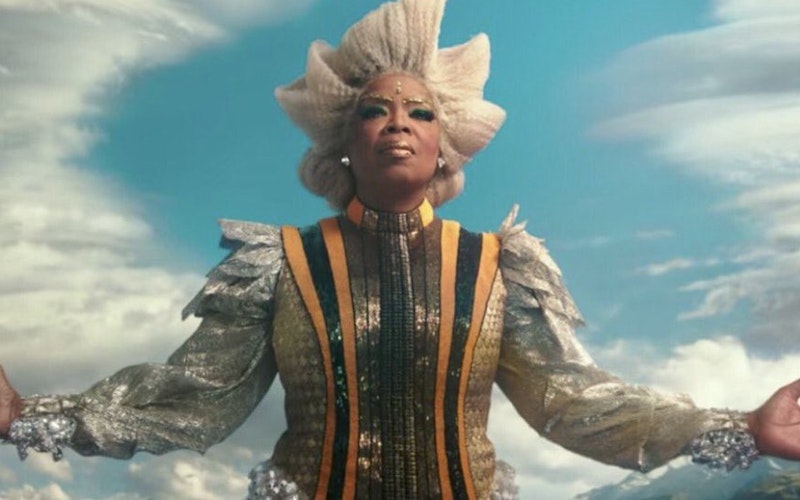
Movies
A Wrinkle in Time and Otherworldly Love
A Wrinkle in Time opens with a scene of warm, enveloping love before plunging into a harrowing story in which that love disappears. Playfully experimenting with her scientist father in his home laboratory, a little girl learns she is about to have a baby brother. Her father assures her that although their family will change, their love for each other will not. “Love is always there,” he says, “even if you don’t feel it.”
Four years later, after the girl’s father (Chris Pine) has mysteriously disappeared, she is struggling to believe those words. Now 14, Meg (Storm Reid) has come to adore her younger brother, Charles Wallace (Deric McCabe), and sympathizes with her mourning mother (Gugu Mbatha-Raw). But when it comes to her father, she feels only confusion, anger, and abandonment. The love has gone.
In adapting Madeleine L’Engle’s young-adult novel, screenwriters Jennifer Lee and Jeff Stockwell, along with director Ava DuVernay, emphasize themes of personal empowerment and self-actualization. (Did I mention that Oprah Winfrey has a supporting part?) Yet there are deeper implications to the story as well. L’Engle herself was a Christian, after all, and her book has long been considered a metaphor for spiritual struggle. And so even as Meg represents insecure teenagers, she also stands in for anyone who has felt unloved, forgotten, and unwanted—only to then be met by the persistent, mysterious, never-failing love of God.
Although the movie begins with a quaint, domestic scene, it quickly becomes cosmic. Visited by three strange beings—Mrs. Who, Mrs. Whatsit, and Mrs. Which (the latter of whom is played by Oprah)—Meg is sent on an adventure to find her father, with her brother Charles Wallace and a friend (Levi Miller) tagging along. Traveling through space and time—“tessering,” in the movie’s language—they visit previously unknown planets, meet sentient flowers who “speak color,” and encounter a disembodied force of evil known only as IT.
At first, this journey only makes Meg feel more abandoned—cast adrift in a dark universe that is bigger and colder than she could have ever imagined. Yet Mrs. Which, echoing Psalm 139:14, points out that considering all of the choices and events that led to the making of Meg, “just the way you are,” her very existence amidst this vastness is something of a miracle. Not long after this conversation, a seer of sorts (Zach Galifianakis) on another planet tells Meg she is “precious.” Together, these otherworldly figures put Meg in the psalmist’s context, affirming that she is “fearfully and wonderfully made.”
Meg stands in for anyone who has felt unloved—only to then be met by the persistent, mysterious, never-failing love of God.
Better than the dialogue, however, is the way the filmmakers envision this sense of being beloved. (Spoilers ahead.) A Wrinkle in Time is often discussed as an unfilmable book, given L’Engle’s expansive imagination, yet aside from a few CGI-heavy missteps, DuVernay and her team manage to evoke its sense of endless wonder. In one scene, Meg is trapped in a strange white room, unable to see a way out. But then she dons a pair of glasses given to her by Mrs. Who and suddenly the other dimensions at work in the space appear, like blueprints. It’s an echo of her father’s words—that love exists even when you can’t feel it. And, indeed, the “invisible” staircase she discovers leads her to him.
By this point, Meg is beginning to understand not only that she is indeed loved, but that she’s loved exactly as she is. It’s here that the movie offers another gospel inflection, a reminder that Christ loved us while we were still sinners. In her face-off with IT, at which point the evil entity has infected the mind of Charles Wallace and is using him against her, Meg gets the upper hand by reminding her brother that he loves her, even though she has faults that annoy him.
Of course, even when we experience the love of others, we can still hate ourselves. Teased at school for her strange family, nerdy demeanor, and kinky hair, Meg must also learn to ignore such derision and love herself. In an attempt to further intimidate her, IT creates a doppelganger of the “perfect” Meg, with more stylish clothes and straightened hair. It’s only after rejecting that false version of herself that Meg, and her family, are free.
This freedom is captured in what is perhaps the movie’s loveliest image, as Meg “tessers” back to Earth. Previous trips have been painful and frightening—captured in quick, claustrophobic images of Meg’s face covered by a fabric in dark space—but here we see her entire body floating slowly through an amber expanse. Ribbons of light caress her limbs, seemingly guiding her forward, from one to the other.
During this climactic moment, A Wrinkle in Time offers an image of the perfect love that John writes about in his letter. In her rejection of IT, Meg literally enacts a love that “drives out fear.” In the aftermath, buoyed by the assurance that she was indeed first loved—both across the universe and the expanse of time—Meg can now love as well.
Topics: Movies